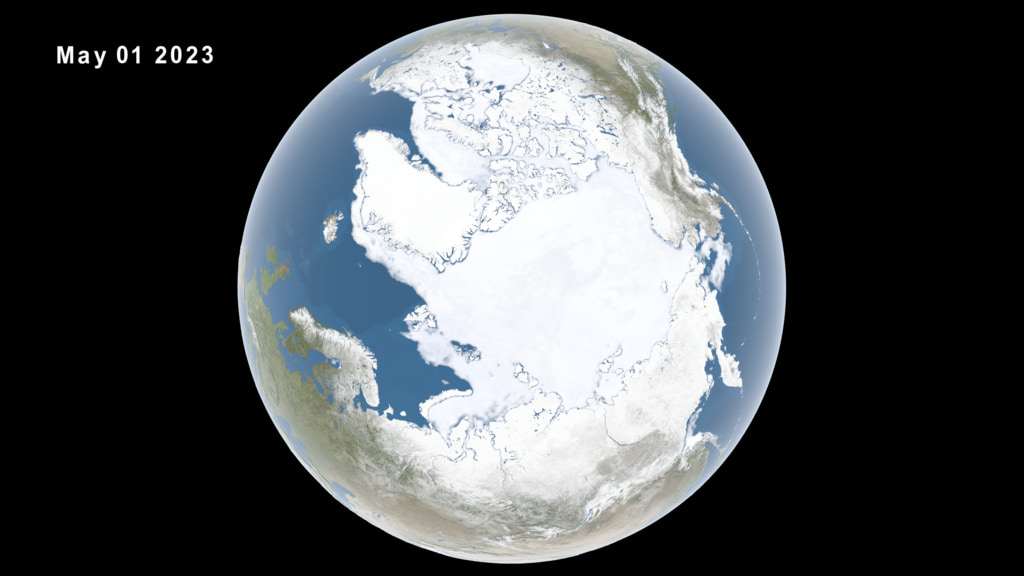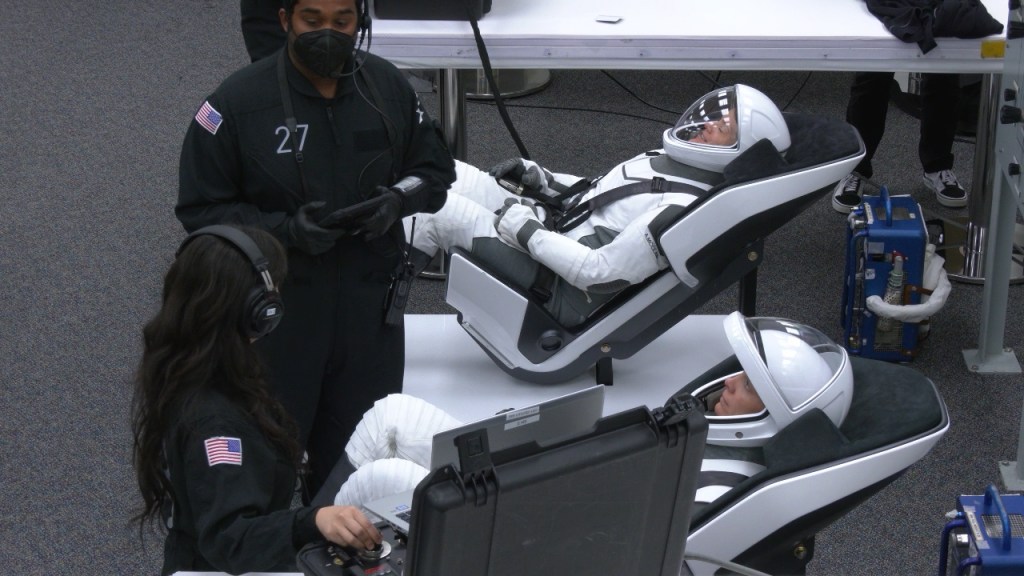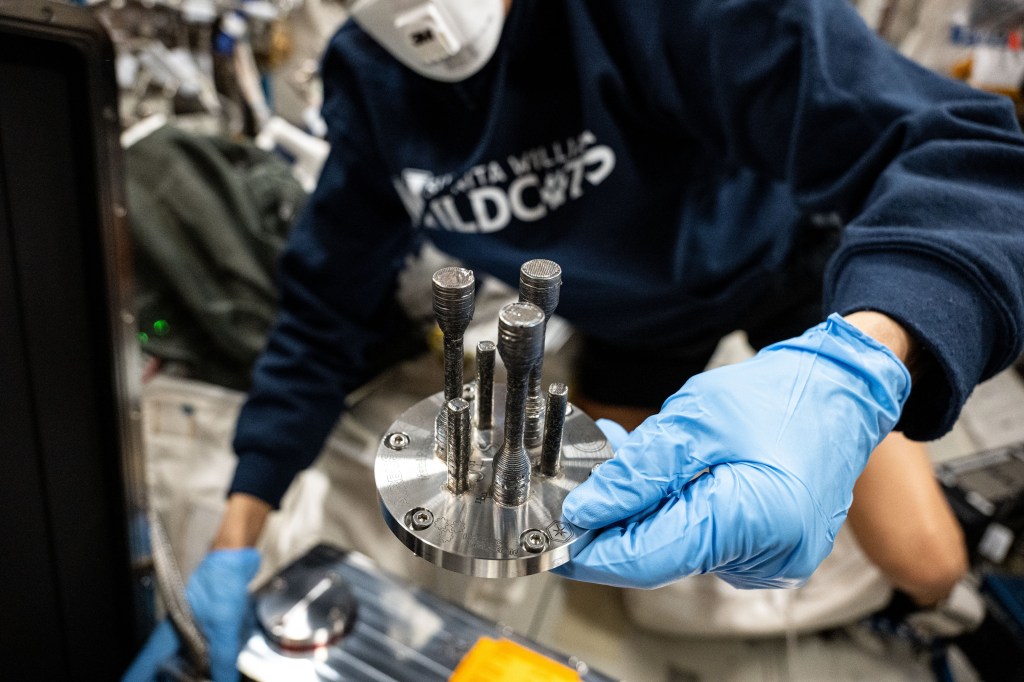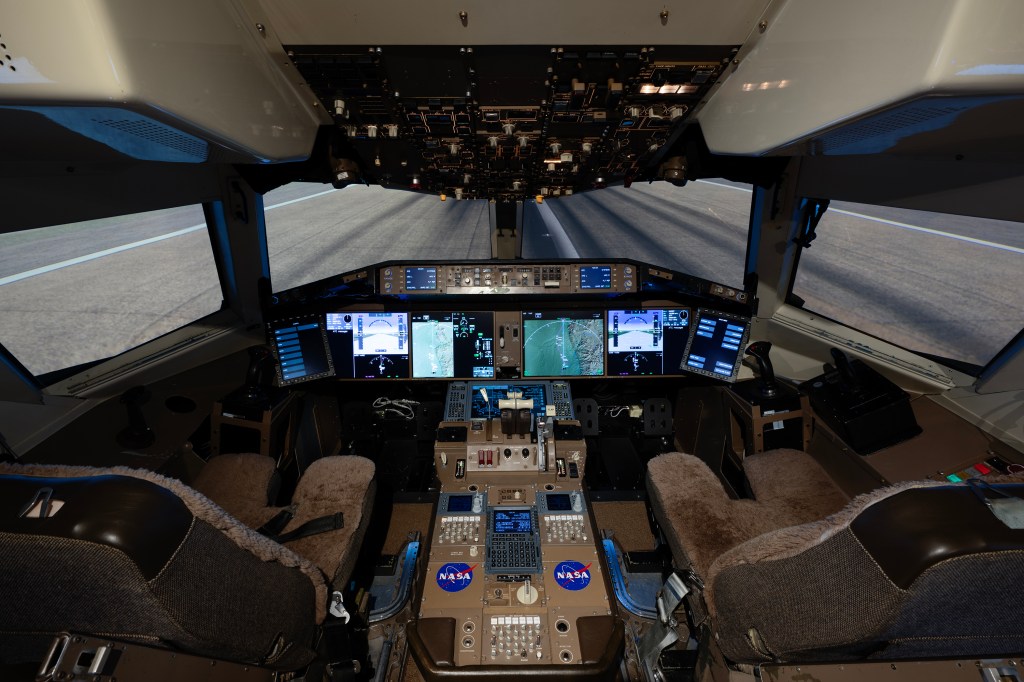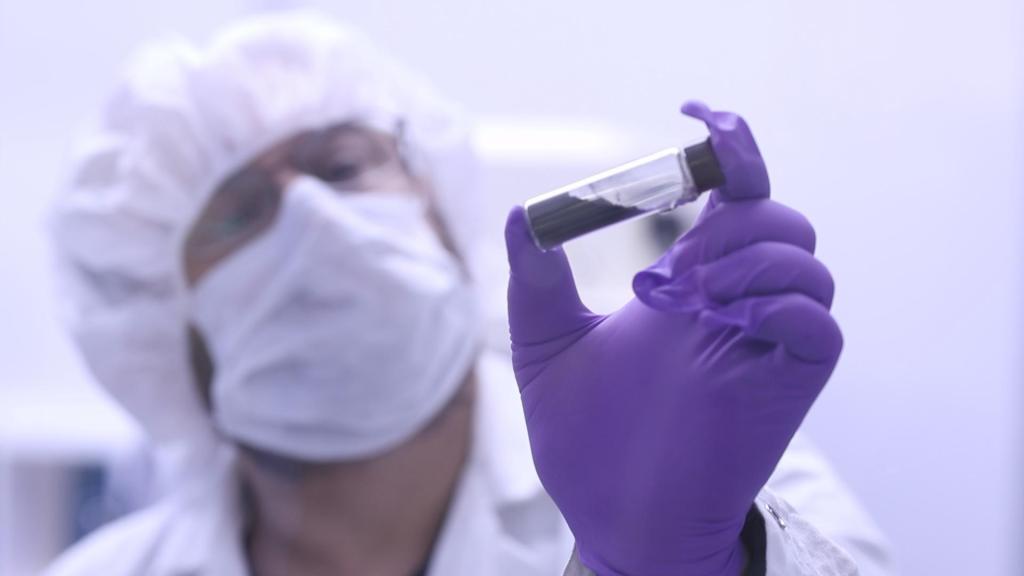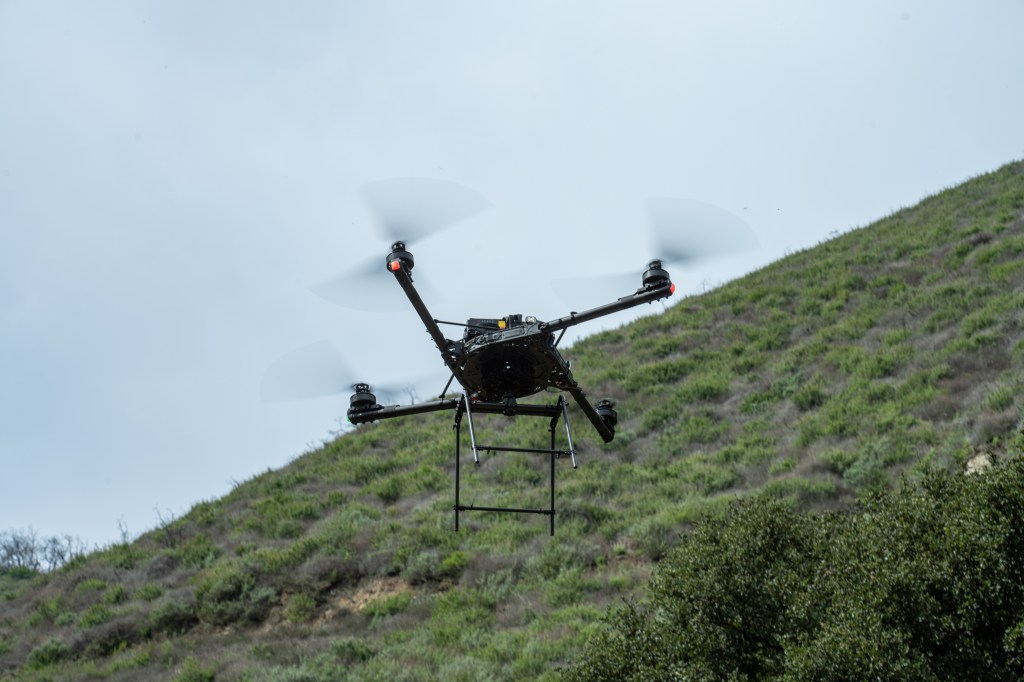ISS Daily Summary Report – 3/24/2021
Editor’s note: Updated on March 26 with more information on the Crew-1 Dragon status.
Update: Early Wednesday morning, several alarms were triggered aboard the International Space Station and the SpaceX Crew Dragon spacecraft. The crew stepped into emergency procedures in cooperation with flight controllers on the ground and determined that the alarms were false and all station systems were operating normally. The crew was never in danger. The SpaceX team quickly determined the Crew Dragon’s systems were healthy and resumed the spacecraft’s normal configuration. The NASA and SpaceX teams determined the likely cause was radiation interference on a Dragon to station communication device, separate from the flight computer control systems, resulting in a faulty data transmission between Dragon and the station. The joint teams worked on plans to mitigate impacts in the unlikely event of a similar radiation occurrence in the future.
Although the station is protected by Earth’s magnetic field, it is subjected to higher radiation levels than on Earth’s surface occasionally impacting electronic systems. Space station teams work to mitigate the radiation risk associated with the space environment in different ways, including extra shielding for electronics and crew areas
Crew-1 Dragon Status: Overnight Dragon experienced an unexpected wakeup triggered by false ISS emergency alarms caused by erroneous data from the Dragon 1553 driver in one of the power units. The erroneous data was resolved by swapping to the separate power unit string, rebooting, and swapping back to initial configuration to confirm healthy. On console operators completed vehicle reconfiguration, and Dragon is back in fully nominal, quiescent operation. It is believed that the issue was caused by a radiation upset with low likelihood of reoccurrence.
Payloads
HemoCue: The crew performed sample operations and sample analysis using the white blood cell (WBC) Analyzer. HemoCue WBC DIFF White Blood Cell Count and Differentiator Technology Demonstration (HemoCue) tests the ability of a commercially available device to provide quick and accurate total and differentiated white blood cell (WBC) counts in microgravity using control solutions. The total number of WBCs and counts of the five different types of WBCs (neutrophils, lymphocytes, monocytes, eosinophils, and basophils) are commonly used by doctors to aid in the diagnosis of sick patients and to monitor a variety of health conditions on Earth. Verification of an autonomous medical capability for blood analysis in microgravity on the International Space Station is an important step in meeting the health care needs of crew members on long duration missions.
Education Payload Operations (JAXA EPO Take 7): The crew set up the appropriate hardware and recorded various experiment activities in support of the NHK’s special program “TSUNAGU~Torch relay starts toward Tokyo”, which will be broadcasted on March 25, 2021. The Japan Aerospace Exploration Agency Public Relations Activity (JAXA EPO) includes conducting cultural activities such as writing reports about and filming video of activities aboard the International Space Station (ISS). These tools can help inform the public about the importance of the ISS, JAXA’s Kibo module, and human spaceflight.
KEyence Research Microscope Testbed (KERMIT): The crew installed the KERMIT hardware into the MSRR-1 rack. KERMIT is a commercial off-the-shelf microscope that provides researchers with fundamental microscope capabilities, including state-of-the-art imaging and analysis modules. KERMIT is designed to streamline imaging and analysis through a single platform with easy operation by the International Space Station crew and from the ground. KERMIT provides the ability to perform advanced microscopy during spaceflight and remotely from the ground.
Materials Science Research Rack-1 (MSRR): The crew removed and stowed the protective cover from the MSRR rack. The Materials Science Research Rack-1 (MSRR-1) is used for basic materials research in the microgravity environment of the ISS. MSRR-1 can accommodate and support diverse Experiment Modules (EMs). Many material types, such as metals, alloys, polymers, semiconductors, ceramics, crystals, and glasses, can be studied to discover new applications for existing materials and new or improved materials.
Plasma Krystall-4 (PK-4): The crew manipulated the Gas Supply Insert Valves on the External Gas Supply Frame and the Shut-Off Valves on the Experiment Interface in order to change gas from neon to argon. PK-4 is a scientific collaboration between the European Space Agency (ESA) and the Russian Federal Space Agency (Roscosmos), performing research in the field of “Complex Plasmas”: low temperature gaseous mixtures composed of ionized gas, neutral gas, and micron-sized particles. The micro-particles become highly charged in the plasma and interact strongly with each other, which can lead to a self-organized structure of the micro-particles: so-called plasma crystals. Experiments in the facility aim to study Transport Properties, Thermodynamics, Kinetics and Statistical Physics, and Non-linear waves and Instabilities in the plasmas.
Ribosome Profiling: The crew relocated samples cassettes from the MELFI-1 and placed them in MELFI-2. Since life on Earth emerged about 4 billion years ago, living species have evolutionally adjusted to Earth’s gravity. However, how cells utilize gravity for their gene expression has remained largely unknown. The Genome-wide Survey of Translational Control in Microgravity (Ribosome Profiling) investigation aims to provide insight into how gravity impacts gene expression, with a special focus on translation regulation utilizing a state-of-art technique called “ribosome profiling”.
The ISS Experience: Crewmembers performed an ISS Experience recording in the Russian Segment to represent the activities for an EVA preparation. The International Space Station Experience (The ISS Experience) is a cinematic virtual reality (VR) series documenting life and research aboard the space station. Filmed over multiple months, the immersive VR series documents different crew activities – from science conducted aboard the station to preparation for a spacewalk.
Systems
Joint Station Lan (JSL) Node 1 Gigabit Cable Routing: The crew continued routing the new JSL Gigabit Ethernet cable. Today they routed new cable from Node 1 forward endcone to Node 1 port. This follows yesterday’s cable routing in the Lab.
Water Recovery System (WRS) Catalytic Reactor Remove & Replace (R&R) Prep: Following a number of represses on Sunday, the team saw a ~1-pound decrease in the wastewater tank quantity. Based on this decrease, it is believed there is ~1-pound/day leak within the Cat Reactor. In preparation for the R&R, today the crew removed some T2 components allowing for access to rotate WRS-1 Rack to install the ARIS Pivot Fittings to the WRS Rack.
Dragon Relocation On-Board Training (OBT): The crew reviewed the plan for upcoming Crew-1 relocation from PMA2 to Node 2 Zenith. This activity is currently scheduled for April 5.
Mobile Servicing System (MSS) Operations: Yesterday, Robotics Ground Controllers walked off the Space Station Remote Manipulator System (SSRMS) to the Mobile Base System (MBS) Power & Data Grapple Fixture 1 (PDGF 1). The SSRMS was then maneuvered to a park configuration. The MSS was powered down and the Mobile Transporter (MT) was translated from Worksite 5 (WS 5) to WS 2. The MSS was powered up and the SSRMS was maneuvered to survey Latching End Effector B (LEE B) with the S1 LOOB External High Definition Camera (EHDC). The LEE B survey was completed today. The SSRMS was maneuvered to park and the MSS was powered down.
Completed Task List Activities:
- CASA JLP1P2 clear
- EHS TEPC spectrometer power on
- MSRR stow reconfig
- EVA PBA relocate
Today’s Ground Activities:
All activities are complete unless otherwise noted.
- JSL N1 cable routing
- Payloads ops support
- Dragon relocation OBT
Look Ahead Plan
Thursday, March 25 (GMT 084)
Payloads:
- Ribosome Profiling Sample fixation (JAXA)
- Standard Measures Body collect and Survey (NASA)
- Standard Measures Fecal collect (NASA)
- Standard Measures Cognition test (NASA)
- Food Acceptability (NASA)
- Micro-16 Loading and Microscope ops(NASA)
- HRF2 Bric changeout (NASA)
- Repository-Saliva collect (NASA)
- ISS Experience H/W stow (NASA)
- Food Physiology Diet Brief (NASA)
- HRF Saliva collect (NASA)
- APM data transfer and Node2 install (NASA)
- PK4 HD exchange and Run 3
Systems:
- Airborne Particulate Monitor data transfer/removal from Lab/N2 install
Friday, March 26 (GMT 085)
Payloads:
- Ribosome Profiling Sample fixation 2 (JAXA)
- Time Perception run (ESA)
- J-SSOD M2 removal (NASA)
- HRF Veg Question (NASA)
- RTPCG Micro (B1,B2) ops (NASA)
- AC Touch (NASA)
- Micro-16 Load and microscopy ops (NASA)
- Food Acceptability (NASA)
- Standard Measures Fecal collect and surveys (NASA)
- MD Print removal and stow (NASA)
- PK4 chamber storage and monitor deinstall (Joint)
- BAC interview (NASA)
Systems:
- JSSOD Microsat removal
- MPEP removal from JEMAL Slide Table
- JEMAL ST retraction into JEMAL from JPM
Saturday, March 27 (GMT 086)
Payloads:
- Off duty
Systems:
- Off duty
Sunday, March 28 (GMT 087)
Payloads:
- Off duty
Systems:
- Off duty
Today’s Planned Activities:
All activities are complete unless otherwise noted.
- Photo/TV RED Camera Troubleshooting
- Standard Measures Post-sleep Questionnaire Varient 10-Minute Duration
- HRF Generic Urine Collection Male
- HRF Generic MELFI Sample Retrieval And Insertion Operations
- HRF Generic HRF Centrifuge Setup And Frozen Blood Collection Subject
- HRF Generic HRF Centrifuge Frozen Blood Collection Configuration
- HRF Generic HRF Centrifuge Frozen Blood Collection Spin Conclude
- ISS HAM Service Module Pass Kenwood [Aborted]
- HRF Generic MELFI Sample Insertion
- Joint Station LAN (JSL) Gigabit Ethernet Cable Routing Gather – Part 1
- Stowage Relocation Node 1
- JAXA VIDEO TAKE7 Item Gather
- PK-4 data hard drives exchange
- JAXA Video Taking Part 7
- Joint Station LAN (JSL) Node 1 Gigabit Cable Routing
- ISS Experience Inverter Handover to RSOS Crew
- XF305 Camcorder Setup
- Confocal Space Microscopy Thermal Container Installation [Aborted]
- Portable 4TB HDD Removal from Mission Data Recorder [Aborted]
- ISS Experience Russian Segment Setup
- KERMIT Unplug Operations
- ISS Experience Recording Preparation
- HRF Generic HRF Centrifuge Frozen Blood Collection Conclude And Stow
- HRF Generic Urine Collection Stow
- ISS Experience Microphone Don
- KEyence Research Microscope Testbed (KERMIT) Power On and Checkout
- ISS Experience recording in FGB
- Environmental Health System (EHS) Total Organic Carbon Analyzer (TOCA) Water Recovery System (WRS) Sample Analysis
- Joint Station LAN (JSL) Node 1 Gigabit Cable Routing
- Portable 4TB HDD Removal from Mission Data Recorder
- KEyence Research Microscope Testbed (KERMIT) Hardware Checkout Part 1
- Orthostatic Intolerance Garment
- Countermeasures System (CMS) Orthostatic Intolerance Garment (OIG) Fit Check
- Ribosome Profiling Sample Relocation
- KEyence Research Microscope Testbed (KERMIT) Hardware Checkout Part 2
- Ribosome Profiling Preservation Cassette Retrieval from MELFI -95 degrees C
- Ribosome Profiling Preservation Cassette Insertion to MELFI +2 degrees C
- ISS Experience Microphone Doff
- ISS Experience Record Conclude
- KEyence Research Microscope Testbed (KERMIT) Hardware Checkout Part 3A
- ISS EXPERIENCE. Closeout
- KEyence Research Microscope Testbed (KERMIT) Hardware Checkout Part 3B
- ISS Experience Hardware Relocate
- PK-4 Chamber filling with Argon gas
- ISS Experience Inverter Handover to USOS Crew
- KEyence Research Microscope Testbed (KERMIT) Hardware Checkout Part 4
- KEyence Research Microscope Testbed (KERMIT) Power Down and Stow
- Antimicrobial Coatings Touch
- Orthostatic Intolerance Garment
- MSRR Protective Cover Removal
- KERMIT REPLUG Operations
- Environmental Health System (EHS) Total Organic Carbon Analyzer (TOCA) Sample Data Record

